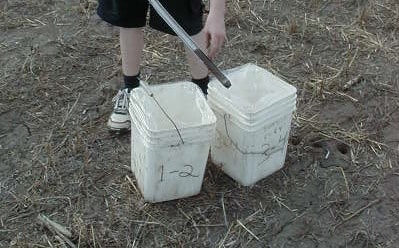
Take fall samples when soil temperatures drop below 10°C, or cooler. Because microbial processes in the soil slow down as temperatures cool, sampling late in the fall will provide a close representation of nutrient levels at seeding next spring. The cooler the better when sampling, but you want to make sure you can still get the probe down 24”. Submit samples for 0-6” and 6-24”.
Fall soil tests give growers time to process samples and get results and recommendations. That information can be used to develop a fertilizer program for this fall or next spring, and have more time to order fertilizer, to take advantage of typically lower fall fertilizer prices, and to spread the workload out over two seasons.
The key with soil tests is to be consistent. If you usually test in the fall, continue testing in the fall, and sample in similar locations in the field. (If you have GPS marked coordinates, you can sample the same places each time.) Then when you get the results, concentrate on the trends — are reserves going up or down over time? Use the trend line to reassess fertilizer rates.
Further reading:
Canola Encyclopedia soil sampling techniques and tips